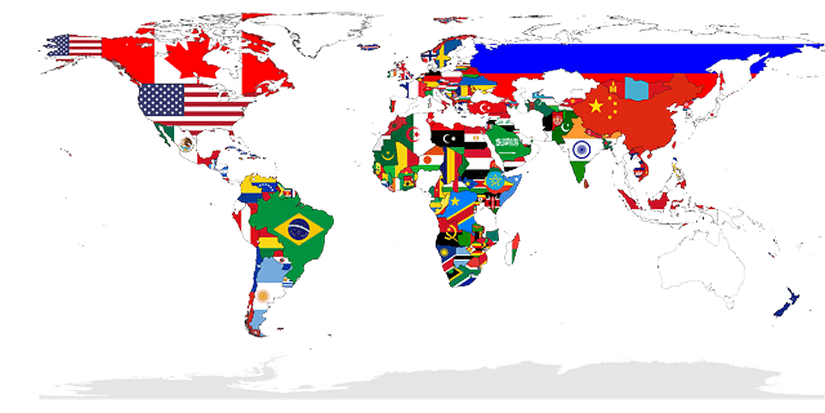By JustMarkets
At Wednesday’s close, the Dow Jones Industrial Average (US30) was up 0.31%, while the S&P 500 Index (US500) added 1.07%. The NASDAQ Technology Index (US100) closed positive at 2.17%. Yesterday, investors weighed in on the latest inflation data and its implications for Federal Reserve policy. The inflation data showed that core prices fell to a three-year low, but core inflation rose 0.3%, which exceeded expectations. That fueled speculation that the Fed would favor a smaller 0.25% interest rate cut at next week’s meeting, with traders downgrading the probability of a 50 basis point rate cut to 13%. On the political front, the presidential debate boosted the chances of Kamala Harris winning the election, which helped solar stocks rise and cryptocurrency-related stocks fall.
Equity markets in Europe traded flat yesterday. The German DAX (DE40) was up 0.35%, the French CAC 40 (FR40) closed down 0.14%, the Spanish IBEX 35 (ES35) added 0.67%, the British FTSE 100 (UK100) closed negative 0.15%.
The European Central Bank (ECB) will hold a monetary policy meeting on Thursday, September 12. There is almost a 100% chance that the ECB will cut the rate by 0.25%. A quarter-point cut would bring the rate down to 4.00%. The ECB is also expected to make a technical adjustment and reduce the spread between the deposit rate and the main refinancing rate from 50 basis points to 15 basis points. If this happens, a 25 basis point cut in the deposit rate would lead to a more substantial 60 basis point cut in the refinancing rate. This constitutes a “dovish” factor. Financial markets are even more convinced of the need for rate cuts in the coming months and quarters.
Sweden’s annual inflation rate slowed to 1.9% in August 2024, down from 2.6% in the previous month and below the market expectation of 2.1%. This is the lowest level since July 2021.
WTI crude oil prices rose by 2.4% to $67.3 on Wednesday, regaining some ground after hitting a near three-year low in the previous session. However, oil prices remained near their lowest level since May 2023 despite a smaller-than-expected increase in inventories. The US crude stockpiles rose 0.83 million barrels, below the expected 1 million, while gasoline and distillate inventories rose more than expected. In addition, the EIA lowered oil price estimates for Q4 and 2025 after OPEC continued its downward revision of demand prognoses. Concerns remain about weakening demand in key markets, especially China.
The US natural gas (XNG/USD) prices climbed above $2.27/mmbtu, nearing the two-month high of $2.275 reached on September 6, driven by stronger seasonal demand, and record LNG exports. While inventories remain slightly above average, potential supply disruptions due to Gulf Coast storms and increased export volumes could quickly draw down those inventories, putting further upward pressure on prices.
Asian markets were predominantly down yesterday. Japan’s Nikkei 225 (JP225) was down 1.49%, China’s FTSE China A50 (CHA50) lost 0.59%, Hong Kong’s Hang Seng (HK50) was 0.73% cheaper and Australia’s ASX 200 (AU200) was negative 0.30%.
Expectations for Australian consumer inflation in September 2024 came in at 4.4%, down slightly from August’s 4-month high of 4.5%. The latest reading reflects the Central Bank’s efforts to bring inflation down within a reasonable timeframe while maintaining positive labor market outcomes. Reserve Bank Governor Michele Bullock recently noted that inflation has slowed significantly since its peak, although it remains above the midpoint of the 2–3% target. She also emphasized that it is premature to consider easing monetary policy.
The Bank of Japan (BoJ) should raise interest rates to at least 1% by the end of 2025, hawkish board spokesman Naoki Tamura said in a speech. It marked the first time a policymaker has publicly proposed a specific target level for the cost of short-term borrowing. Tamura said that the likelihood of the Japanese economy being able to consistently meet the 2% inflation target is increasing. He also explained that an interest rate of around 1% is considered neutral, meaning it neither stimulates nor slows the economy.
S&P 500 (US500) 5,554.13 +58.61 (+1.07%)
Dow Jones (US30) 40,861.71 +124.75 (+0.31%)
DAX (DE40) 18,330.27 +64.35 (+0.35%)
FTSE 100 (UK100) 8,193.94 −12.04 (−0.15%)
USD Index 101.73 +0.10 (+0.09%)
News feed for: 2024.09.12
- Japan Producer Price Index (m/m) at 02:50 (GMT+3);
- Eurozone ECB Monetary Policy Statement at 15:15 (GMT+3);
- Eurozone ECB Interest Rate Decision at 15:15 (GMT+3);
- US Producer Price Index (m/m) at 15:30 (GMT+3);
- US Initial Jobless Claims (w/w) at 15:30 (GMT+3);
- Eurozone ECB Press Conference at 15:45 (GMT+3);
- US Natural Gas Storage (w/w) at 17:30 (GMT+3).
By JustMarkets
This article reflects a personal opinion and should not be interpreted as an investment advice, and/or offer, and/or a persistent request for carrying out financial transactions, and/or a guarantee, and/or a forecast of future events.
